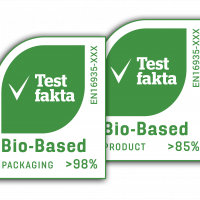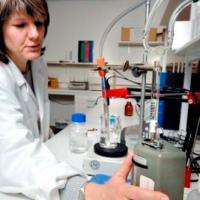Carbon-14 analysis is best known for the role it plays in modern archaeology, where it is used to determine the age of findings. But at the RISE laboratory in Borås, researchers use carbon-14 to distinguish biomass (such as plants, trees and animals) from fossil-based raw materials (such as oil and natural gas). Conny Haraldsson, researcher at RISE, explains:
– The principle behind carbon-14 is important to understand. The sun's radiation causes a small percentage of the carbon dioxide in the atmosphere to contain carbon-14, which is taken up by all plants and animals. Over the years, carbon-14 disappears from the materials because carbon-14 is weakly radioactive. Fossil material, therefore, contains no carbon-14. Measuring how much of the sample's carbon is made up of the isotope C 14, in this case, is the same as seeing the ratio between the sample's biomass and fossil content, says Conny Haraldsson.
An example where carbon-14 analysis is used is diesel, where you can measure the proportion that comes from renewable material, such as rapeseed. That, for example, diesel must contain a certain amount of renewables is determined by law, the so-called Reduction Duty. This is precisely one of the most common services RISE provides with its carbon-14 analysis.
– Fuels are the most common, when a municipality procures, for example, a transport service, they often stipulate that biofuels must be used. and sometimes test the composition of the fuel they buy. We also analyze, for example, plastic bags, where companies that sell products made from renewable materials want analysis results that prove this. Even companies that buy in products want help checking what, for example, the bags are made of, says Conny.
How does it work in the lab when RISE extracts the C 14 content of a sample?
– We burn the sample in an elemental analyzer and take care of the carbon dioxide. Then we freeze it with liquid nitrogen and remove impurities, then thaw the sample and feed it into a spectrometer. From it we get a measurement result that shows the proportion of biomass in the sample, Conny says.
Testfakta has enlisted the help of RISE to analyze the proportion of bio-based content in several tests, among other things to analyze washing and fabric softener products that are marketed as more sustainable, natural and bio-based.
Read more about Carbon as an indicator for bio-based content.





